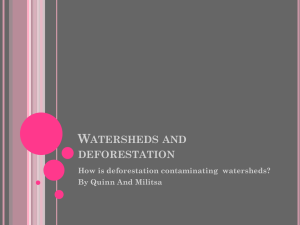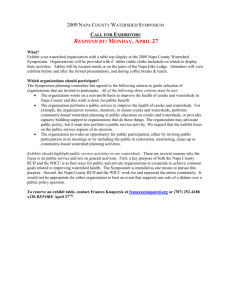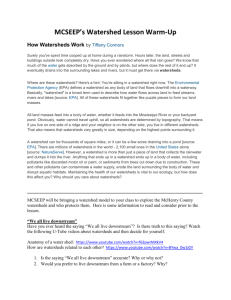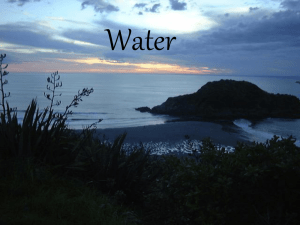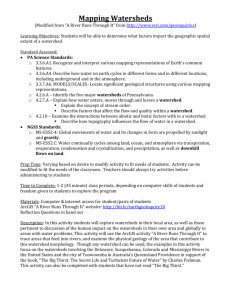What is a watershed?
advertisement
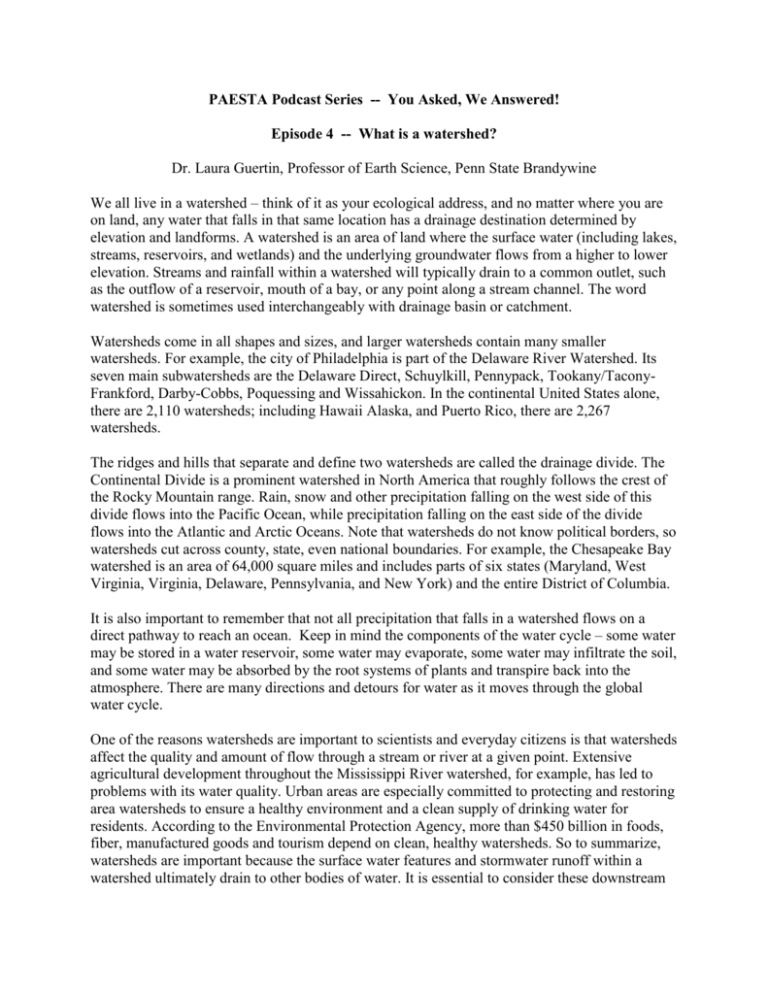
PAESTA Podcast Series -- You Asked, We Answered! Episode 4 -- What is a watershed? Dr. Laura Guertin, Professor of Earth Science, Penn State Brandywine We all live in a watershed – think of it as your ecological address, and no matter where you are on land, any water that falls in that same location has a drainage destination determined by elevation and landforms. A watershed is an area of land where the surface water (including lakes, streams, reservoirs, and wetlands) and the underlying groundwater flows from a higher to lower elevation. Streams and rainfall within a watershed will typically drain to a common outlet, such as the outflow of a reservoir, mouth of a bay, or any point along a stream channel. The word watershed is sometimes used interchangeably with drainage basin or catchment. Watersheds come in all shapes and sizes, and larger watersheds contain many smaller watersheds. For example, the city of Philadelphia is part of the Delaware River Watershed. Its seven main subwatersheds are the Delaware Direct, Schuylkill, Pennypack, Tookany/TaconyFrankford, Darby-Cobbs, Poquessing and Wissahickon. In the continental United States alone, there are 2,110 watersheds; including Hawaii Alaska, and Puerto Rico, there are 2,267 watersheds. The ridges and hills that separate and define two watersheds are called the drainage divide. The Continental Divide is a prominent watershed in North America that roughly follows the crest of the Rocky Mountain range. Rain, snow and other precipitation falling on the west side of this divide flows into the Pacific Ocean, while precipitation falling on the east side of the divide flows into the Atlantic and Arctic Oceans. Note that watersheds do not know political borders, so watersheds cut across county, state, even national boundaries. For example, the Chesapeake Bay watershed is an area of 64,000 square miles and includes parts of six states (Maryland, West Virginia, Virginia, Delaware, Pennsylvania, and New York) and the entire District of Columbia. It is also important to remember that not all precipitation that falls in a watershed flows on a direct pathway to reach an ocean. Keep in mind the components of the water cycle – some water may be stored in a water reservoir, some water may evaporate, some water may infiltrate the soil, and some water may be absorbed by the root systems of plants and transpire back into the atmosphere. There are many directions and detours for water as it moves through the global water cycle. One of the reasons watersheds are important to scientists and everyday citizens is that watersheds affect the quality and amount of flow through a stream or river at a given point. Extensive agricultural development throughout the Mississippi River watershed, for example, has led to problems with its water quality. Urban areas are especially committed to protecting and restoring area watersheds to ensure a healthy environment and a clean supply of drinking water for residents. According to the Environmental Protection Agency, more than $450 billion in foods, fiber, manufactured goods and tourism depend on clean, healthy watersheds. So to summarize, watersheds are important because the surface water features and stormwater runoff within a watershed ultimately drain to other bodies of water. It is essential to consider these downstream impacts when developing and implementing water quality protection and restoration actions. Everything upstream ends up downstream. (This audio file was recorded by Laura Guertin on July 26, 2015)



